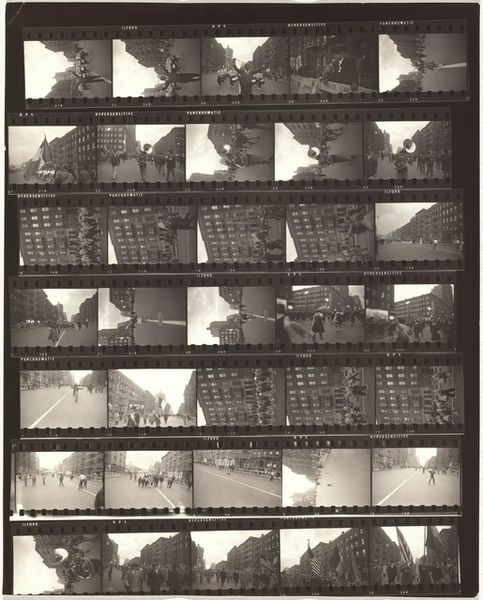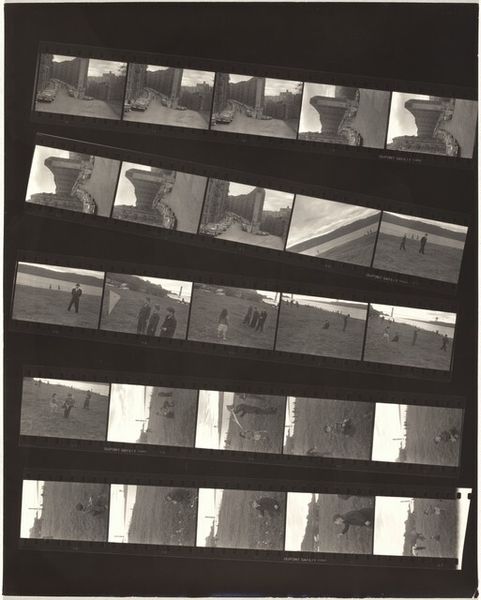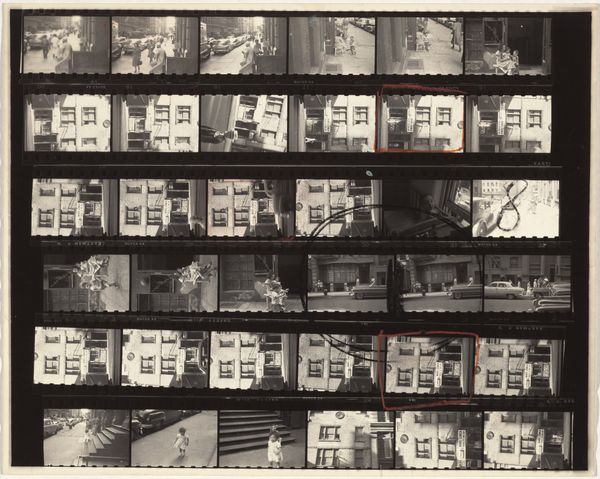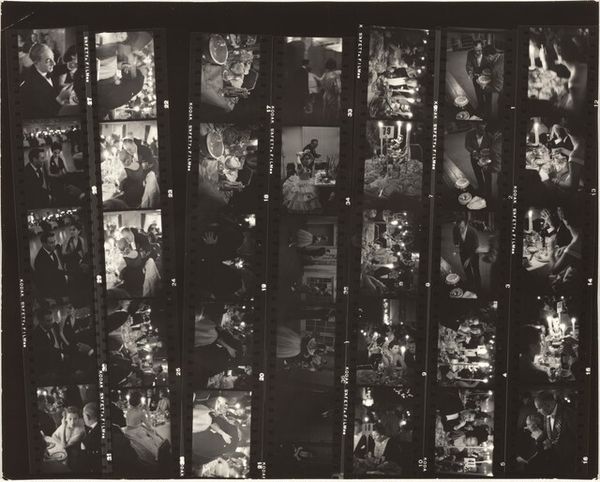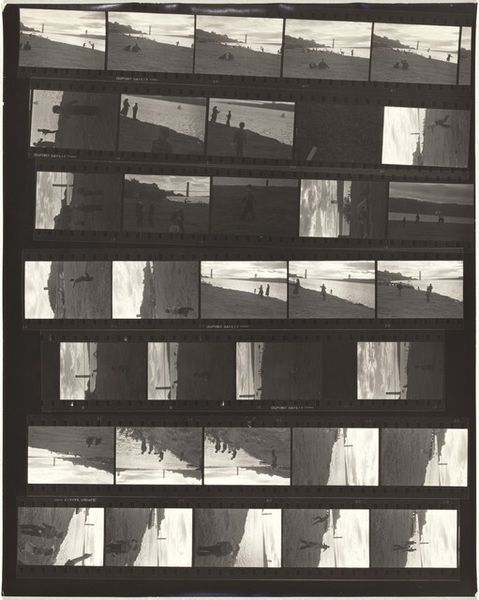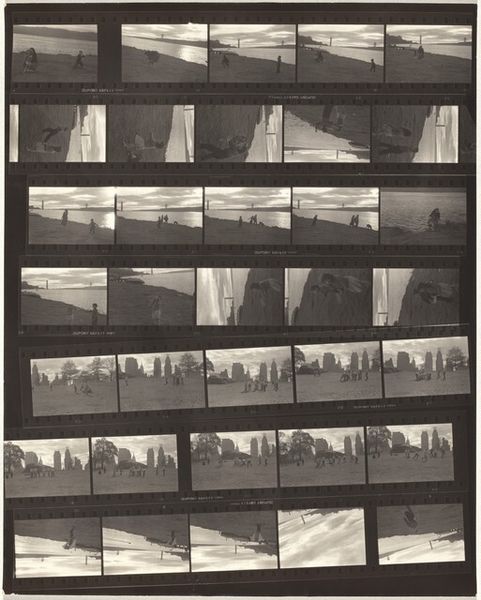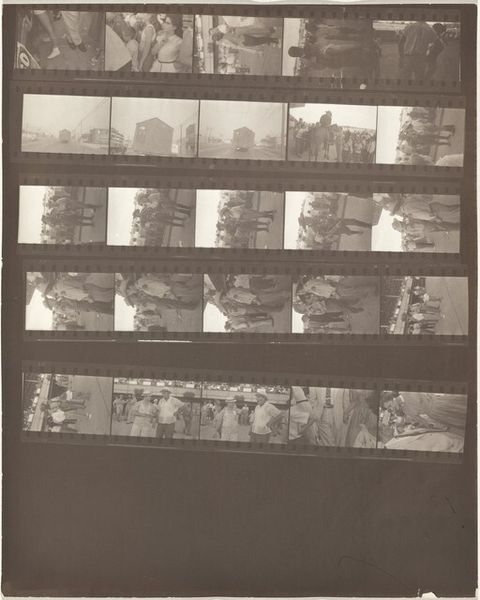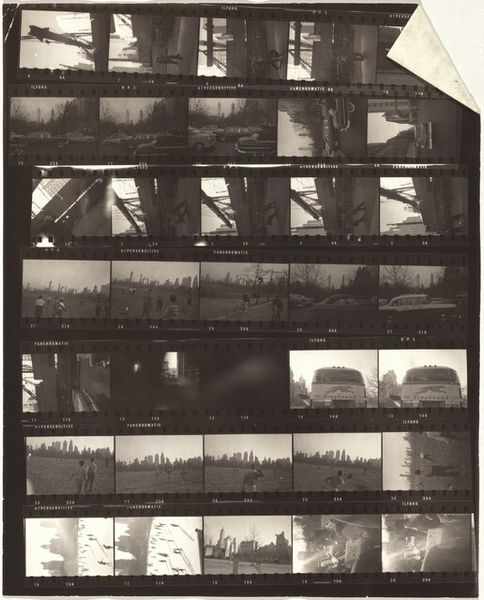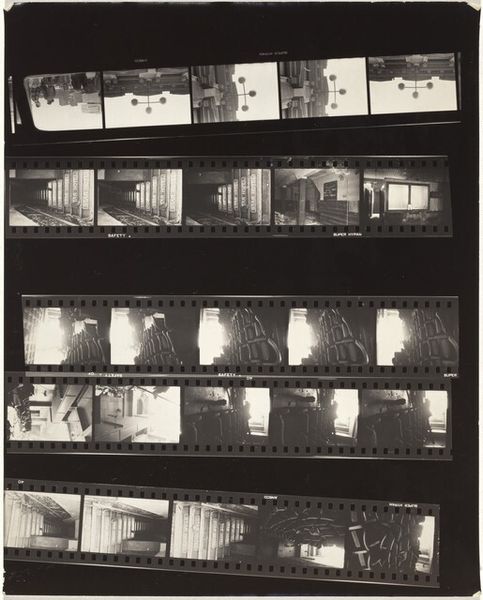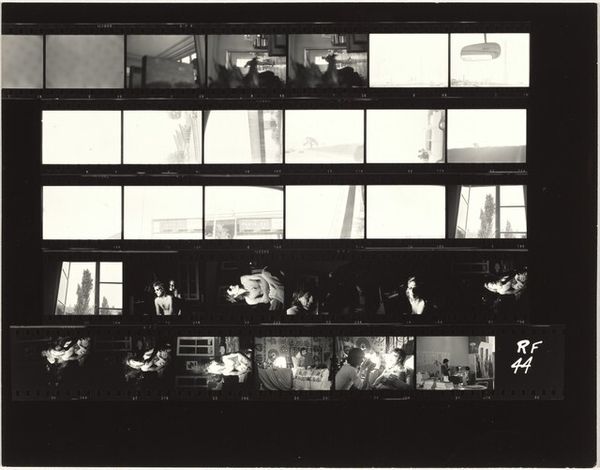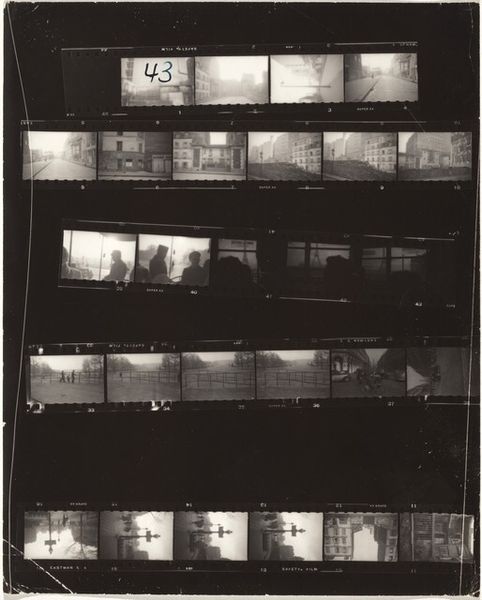
photography, gelatin-silver-print
#
film photography
#
archive photography
#
street-photography
#
photography
#
gelatin-silver-print
#
cityscape
#
modernism
Dimensions: sheet: 20.2 x 25.2 cm (7 15/16 x 9 15/16 in.)
Copyright: National Gallery of Art: CC0 1.0
Curator: The work before us, "Buildings at night--New York City A", is a gelatin silver print created around 1957-58 by Robert Frank. At first glance, what do you observe? Editor: My immediate reaction is a sense of fragmentation. The contact sheet format, with its multiple exposures of the same subject, creates a staccato rhythm, an almost cinematic effect, yet inherently still and graphic. Curator: Yes, the cinematic quality aligns perfectly with the cultural shift toward consumerism that framed this period. Skyscrapers, like the Seagram Building, epitomize progress and power, while also carrying that visual language of film that shaped America's perceptions. Note the almost aggressive geometries? Editor: Precisely. I see the recurring motif of towering skyscrapers sliced by stark diagonals and the tight cropping that lends an almost claustrophobic intensity. Frank presents buildings not as majestic symbols of progress, but rather isolated and compressed objects within a rigid framework. He disrupts any easy notions of beauty. Curator: These repetitions are significant, highlighting architecture both as a visual fascination, and as a symbol for alienation in American urban landscapes. This format suggests multiple vantage points on shared ideologies and architectures. How do you feel the symbolism within the dark cityscape reflects any greater sentiments? Editor: Well, considering it was made around the time Frank undertook "The Americans", I read a critical assessment. These structures, which represented American prowess, are rendered in high contrast, with shadows dominating. The glimmering lights fight the oppressive darkness—revealing both ambition and something a bit colder underneath. Curator: Certainly. It serves as a cultural critique using the building as the cultural carrier. He gives the building character that interacts and affects individuals psychologically, as this overwhelming architecture represents the individual struggle. Editor: Robert Frank leaves us, then, not simply with photographs of buildings, but with encoded impressions. A language is translated and communicated through composition, light, and the choices of his visual presentation. Curator: I find myself contemplating the continuity of cultural interpretation through Frank's visual framework. The conversation has changed from consumerism to commentary through symbols and photography. Editor: And for me, it's about appreciating how the technical format complements Frank's artistic viewpoint—repetition, cropping, light all build that message that you touch on, communicating to an individual's sentiment.
Comments
No comments
Be the first to comment and join the conversation on the ultimate creative platform.
